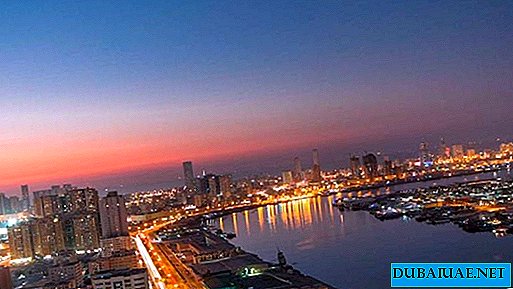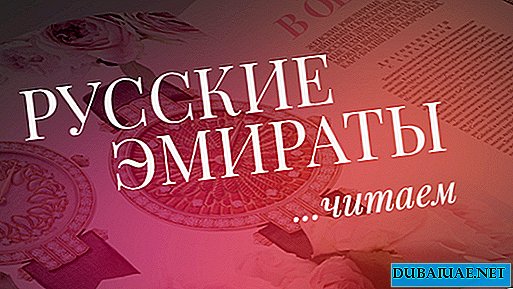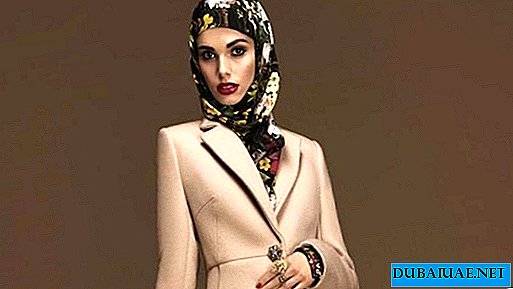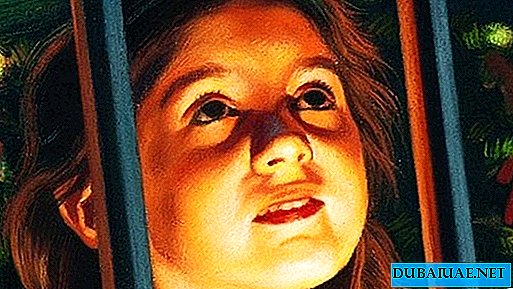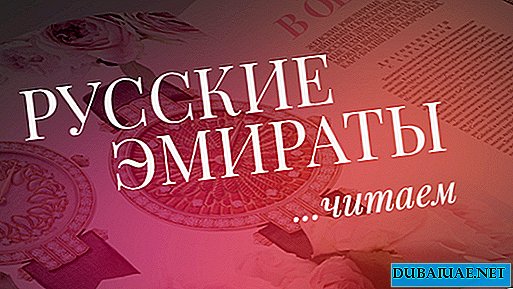 Viktor Lebedev, an oriental journalist, has worked as an ITAR-TASS correspondent for over thirty years in various Arab countries - Syria, Egypt, Sudan, Tunisia, Yemen. Almost half of this term lives and works in the United Arab Emirates. Viktor Lebedev is the author of the book “World of the Emirates” from the series “Arabian Arabesques”, the first winner of the International Prize named after journalist and historian Viktor Posuvaliuk. The permanent author of many country-specific materials published in our journal, Viktor Lebedev is also a literary translator of the verses of the UAE Vice President and Prime Minister, ruler of Dubai, Sheikh Mohammed bin Rashid Al Maktoum. Poems for the Russian edition were personally selected by the high-ranking poet himself.
Viktor Lebedev, an oriental journalist, has worked as an ITAR-TASS correspondent for over thirty years in various Arab countries - Syria, Egypt, Sudan, Tunisia, Yemen. Almost half of this term lives and works in the United Arab Emirates. Viktor Lebedev is the author of the book “World of the Emirates” from the series “Arabian Arabesques”, the first winner of the International Prize named after journalist and historian Viktor Posuvaliuk. The permanent author of many country-specific materials published in our journal, Viktor Lebedev is also a literary translator of the verses of the UAE Vice President and Prime Minister, ruler of Dubai, Sheikh Mohammed bin Rashid Al Maktoum. Poems for the Russian edition were personally selected by the high-ranking poet himself.
 I LIKE PICTURES SEEN ON THE ARTIST'S VILLA IN THE DUBAI UMM SUKEYM. DO NOT BE A PROFESSIONAL IN THE FIELD OF PAINTING, DO NOT TAKE TO OFFER AND EXPRESS YOUR ASSESSMENT OF ITS CREATIVITY. JUDGE YOURSELF FOR REPRODUCTIONS IN THE MAGAZINE. VISIT THE ARTIST. IT IS AVAILABLE, CHARITABLE AND HOSPITAL AS A GENUINE STREAM OF THE ARABIAN NOMBER.
I LIKE PICTURES SEEN ON THE ARTIST'S VILLA IN THE DUBAI UMM SUKEYM. DO NOT BE A PROFESSIONAL IN THE FIELD OF PAINTING, DO NOT TAKE TO OFFER AND EXPRESS YOUR ASSESSMENT OF ITS CREATIVITY. JUDGE YOURSELF FOR REPRODUCTIONS IN THE MAGAZINE. VISIT THE ARTIST. IT IS AVAILABLE, CHARITABLE AND HOSPITAL AS A GENUINE STREAM OF THE ARABIAN NOMBER.
ABDEL KADER AR RAYES - THE FIRST EMIRATE ARTIST. FIRST, BECAUSE BEFORE HIM THE ART IN MODERN UNDERSTANDING IN THE COUNTRY JUST HAS NOT BEEN. AND MORE BECAUSE HE IS THE BEST IN THE ARABIAN REGION, BY ASSESSMENTS OF LOCAL AND FOREIGN VALUES.
We sat together in a small workshop, crowded and littered with finished and in-service paintings. Abdel Kader brought three glasses with a fruit drink. To my question: "Why three if two of us?" He replied: "It is expected that the visitor will enjoy the treat and he will drink a second glass!" This is a retreat in favor of the artist’s generous Bedouin soul. As for his skill, it is obvious for a person who did not see paper in early childhood, since his peers learned to write on camel shovels, to become a real professional artist is a feat of life. The crown of this feat was the placement of the master’s works in the terminal named after Sheikh Rashid at the Dubai International Airport, through which more than a million foreigners pass every month, and the sale of his painting “Close Past” at Cristie's in Dubai for 970 thousand dirhams (almost 265 thousand dollars).
 Unfortunately, the painting left the country and is now in a private collection in Qatar. You can not see many other canvases of the emirate. They delight the eyes of the Arabian nobility, showing off in rich palaces, high dignity salons and courtyards, including royal ones. Emirate government delegations give them to heads of state and ministers during official visits. The artist’s imagination adorns the cabinets of famous personalities in European capitals.
Unfortunately, the painting left the country and is now in a private collection in Qatar. You can not see many other canvases of the emirate. They delight the eyes of the Arabian nobility, showing off in rich palaces, high dignity salons and courtyards, including royal ones. Emirate government delegations give them to heads of state and ministers during official visits. The artist’s imagination adorns the cabinets of famous personalities in European capitals.
In a conversation with me, Abdel Kader, for all his captivating modesty, himself unexpectedly praises the "Close Past." He says that he counted on a sum four times less than the one that was obtained at the auction, and jokingly thanks his fate for the fact that his work was so highly valued in life, while the canvases of many European geniuses are evaluated only after their death. With his paintings, the artist dissolves the doors to the Emirate nature - the blue, bottomless sky, yellow and pink sands, the eternal, sun-heated mountains, the harsh desert, dried up tree branches and gathered spiky grass into bunches.
His gaze is attracted to his wooden pointed navy sambuca and shui at the moorings, and at simple village shipyards. They are waiting for the living sea near the fired rocks, bright in its calm mystery. The stones he wrote live in a hot pink haze. Stones and bushes are in a hopeless confrontation between an irresistible eternity and a fleeting life. Its yellow-blue mountains are beautiful, reminiscent of the Roerich Himalayas in color. Hills of dunes advancing on wildlife threaten the inevitability of an end for all living things. But life triumphs in the bunches of amber dates, which have absorbed the whole bright Arabian sun, hanging on a rope of palm fibers against the background of traditional lattices from the branches of the same Lady Palma.
 In his paintings there are literally many doors that are beautiful in their discoveries. Behind some, half-cautiously ajar, lies the poor world of local unpretentious settlements, causing sadness to heartache with its beautiful and unsophisticated simplicity, rough pottery, cool twilight of the interior, contrasting with the heat of the day reflected on the sun-dried door. Other doors are open to the future. Behind their picturesque alignments grows modern modernist Dubai and a new, breathtaking expanse of sand by the sea, a forward-looking, record-breaking country. Let me make another digression this time on the theme of wooden doors. They are a vibrant and important element of traditional Arabic architecture. The Arabs say: “The house is known by the door,” and they compare the entrance to the house with the title of the book. Doors should evoke warm feelings among the owner and his guests with paints, lively lines of wood, grace of handles and hinges, and the convenience of a castle.
In his paintings there are literally many doors that are beautiful in their discoveries. Behind some, half-cautiously ajar, lies the poor world of local unpretentious settlements, causing sadness to heartache with its beautiful and unsophisticated simplicity, rough pottery, cool twilight of the interior, contrasting with the heat of the day reflected on the sun-dried door. Other doors are open to the future. Behind their picturesque alignments grows modern modernist Dubai and a new, breathtaking expanse of sand by the sea, a forward-looking, record-breaking country. Let me make another digression this time on the theme of wooden doors. They are a vibrant and important element of traditional Arabic architecture. The Arabs say: “The house is known by the door,” and they compare the entrance to the house with the title of the book. Doors should evoke warm feelings among the owner and his guests with paints, lively lines of wood, grace of handles and hinges, and the convenience of a castle.
Arabs of the coastal areas of the Arabian Peninsula cared little for the furniture of their modest dwellings. Carpets and chests - that's all their household property. Hidden behind high adobe walls of the house of the Arabians with their strict horizontals and verticals, small windows, too, did not differ in artistic grace. But the doors are folk art objects throughout the Arab region from Muscat to Rabat. Beauty lives in everyday life, like grass at a well. The sense of beauty is not subject to the canons of faith or the firmmans of the rulers, because it lives in the people regardless of living conditions and political addictions.
Arabs created their doors from expensive wood, decorated with flowers and vignettes, iron and copper nails with curly hats. They were decorated with forged, typical for traditional Islamic art circles, plaques and semicircles, painted with phrases from the Koran and spells. The inscriptions at the entrance to the house often even encrypted the date of its construction, using the digital meanings of the letters of the Arabic alphabet, which made up the words that formed into poetic phrases.
In the manufacture of doors, every craftsman did his job. The carpenter created wooden paintings. The calligrapher wrote out words on them and applied drawings of candlesticks, incense burners, lamps, and other household items.
 The carver carved them and conveyed the artistic "face of the house" to the dyer. The latter, together with the owner, selected tinting to match the colors of the sky, sand, desert flowers, amber date or waxy palm green. The color depended on the taste of the owner and dyer and their ability to come to an understanding. Doors should not only please the eye, but also testify to the hospitality of the owner and his social status. They brought up artistic taste. Taste, as an integral part of cultural capital, is a developed, not an innate tendency, and not all people have it. Mistresses often say: "I have a clean and beautiful!" Cleanliness is quite simple. It requires only labor, not qualification. To rise to the level of beauty is much more difficult. This is not obtained at all.
The carver carved them and conveyed the artistic "face of the house" to the dyer. The latter, together with the owner, selected tinting to match the colors of the sky, sand, desert flowers, amber date or waxy palm green. The color depended on the taste of the owner and dyer and their ability to come to an understanding. Doors should not only please the eye, but also testify to the hospitality of the owner and his social status. They brought up artistic taste. Taste, as an integral part of cultural capital, is a developed, not an innate tendency, and not all people have it. Mistresses often say: "I have a clean and beautiful!" Cleanliness is quite simple. It requires only labor, not qualification. To rise to the level of beauty is much more difficult. This is not obtained at all.
Forms a taste of the social environment. The situation in society, belonging to the social layer affect the interests and attitudes of people. But it is the perception of the soul, the visual talent of a particular person, that serves as a tuning fork for the beauty created by this person. The artistic taste of Abdel Kader ar-Rayes brought up by the Arabian life on the basis of his own subjective perception of the world. He was orphaned early, and at the age of 7 he was sent to foster care in Kuwait. He lived in the sister's family in the same folk environment he was used to in his homeland in Dubai. He was taken care of, he was protected and rarely allowed to walk with peers. He found something to his liking - he began to draw. His creative biography confirms the statement of the French poet du Belle, who believed that "only he will be able to fly around the wings of the whole world who knows how to sit in his room for a long time."
 The school drew attention to the child’s craving for drawing, created the conditions for the development of artistic skills. He began to paint with pastel, then switched to gouache and, studying in the third grade, became the best artist of the school. It was the school years that became the period of gaining mastery. For a fourth-grade student at Al-Mubarakiya School, the first exhibition of his works in oil was organized. Then the boy participated in many other school and adult exhibitions, and his canvases were most often recognized as the best. At his desk, he painted a portrait of his drawing teacher Nasr al-Din, whose name is translated from Arabic as "victory of faith." The teacher, a well-known portrait painter, published in print, was delighted with the art of his pet, saying to him, "May your faith win." (It is very similar to Derzhavinsky "To the Winner to the Student from the Defeated Teacher"). The gifted boy was admitted to the Association of Kuwaiti Artists, becoming her youngest and first foreign member.
The school drew attention to the child’s craving for drawing, created the conditions for the development of artistic skills. He began to paint with pastel, then switched to gouache and, studying in the third grade, became the best artist of the school. It was the school years that became the period of gaining mastery. For a fourth-grade student at Al-Mubarakiya School, the first exhibition of his works in oil was organized. Then the boy participated in many other school and adult exhibitions, and his canvases were most often recognized as the best. At his desk, he painted a portrait of his drawing teacher Nasr al-Din, whose name is translated from Arabic as "victory of faith." The teacher, a well-known portrait painter, published in print, was delighted with the art of his pet, saying to him, "May your faith win." (It is very similar to Derzhavinsky "To the Winner to the Student from the Defeated Teacher"). The gifted boy was admitted to the Association of Kuwaiti Artists, becoming her youngest and first foreign member.
To my question: "Who were the main teachers in art"? - the artist replies that he considers such the best European masters. The first calls Rembrandt. The great Dutchman is followed by the brilliant da Vinci. He mentions the names of the French Impressionists Paul Gauguin, Edgar Degas, Edouard Manet and Claude Monet with an unusual ease in pronunciation for an Arab.
|  |
Abdel Kader knows European painting well. He studied it, copied, imitated, painted in oil and watercolor, which requires special skill and patience. His talent is honed by his passion for European masters. He paid tribute to them in his still lifes, landscapes, impressionist sketches and later in abstract, non-figurative canvases, in which the skilful draftsman showed himself to be a master of color and refuted the opinions that were heard in critics' opinions that he could only have realistic canvases and a photographic image of life .
 Abdel Kader still pays tribute to abstractionism, born of the imagination and brush of the great Russian artist Vasily Kandinsky, but almost does not know Russian painting. He says that somewhere in the late 60s he saw a book with reproductions of works by Russian artists and is encouraged when I promise to bring him copies of works by Russian artists from Moscow. In his abstract paintings, the artist does not change his native nature. They are dominated by its colors - the colors of the sun, sand and sea. They are saturated with traditional elements of local architecture - domes, gratings, high wind towers, replacing air conditioners, arches. In abstractions, the colors of local carpets live.
Abdel Kader still pays tribute to abstractionism, born of the imagination and brush of the great Russian artist Vasily Kandinsky, but almost does not know Russian painting. He says that somewhere in the late 60s he saw a book with reproductions of works by Russian artists and is encouraged when I promise to bring him copies of works by Russian artists from Moscow. In his abstract paintings, the artist does not change his native nature. They are dominated by its colors - the colors of the sun, sand and sea. They are saturated with traditional elements of local architecture - domes, gratings, high wind towers, replacing air conditioners, arches. In abstractions, the colors of local carpets live.
A nugget and self-taught, raising seven children with two wives, he is ready to study at the age of 56. As a child, he left his native Dubai, where, together with his peers, he sailed across the Dubai Bay from Deira, seeing rare palm trees on the shore in BarDubai, he is familiar with nostalgia from his young nails and reflects soul movements in his works. Subtlely sensitive person Abdel Kader in his works perfectly conveys the mood. He says that some of them are indeed filled with sadness about past events, past people and old times. "Many of those sorrows are already in the past, but when I return to my paintings even on a bright day for me, I experience the same feelings that gripped me when I wrote them. I hope that my mood lives in the picture and is conveyed to the viewer."
The son of his Arabian environment, the artist paid tribute to Arabic calligraphy. But he did not follow this traditional path of Arabic fine art, although he magnified his beloved penultimate letter of the Arabic alphabet “wow”, which is a union “and” in the great language and entered almost all the written languages of the world in the form of a simple comma.
 After returning to the UAE, Abdel Kader ar-Rayes graduated from Sharia and law at a local university and left his brush. A master who wears a large, broad beard, which immediately suggests the idea of great religiosity, does not explain the reasons for the sudden rejection of painting. To my question whether theological specialization has influenced this decision, he answers in the negative. I accepted this answer, since the specialist in the field of Sharia could not completely satisfy my interest regarding the attitude of Islam to the visual arts, which meant for me that he had no solid religious, doctrinal prerequisites for avoiding his beloved work and the main passion for life. "In Islam, there is something forbidden and permissible with regard to artistic images," he said, without going into details. One of the reasons for temporary aesthetic asceticism could be the almost complete absence in the country in the first years of the existence of the emirate state of any interest in painting, which appeared only during the last decade.
After returning to the UAE, Abdel Kader ar-Rayes graduated from Sharia and law at a local university and left his brush. A master who wears a large, broad beard, which immediately suggests the idea of great religiosity, does not explain the reasons for the sudden rejection of painting. To my question whether theological specialization has influenced this decision, he answers in the negative. I accepted this answer, since the specialist in the field of Sharia could not completely satisfy my interest regarding the attitude of Islam to the visual arts, which meant for me that he had no solid religious, doctrinal prerequisites for avoiding his beloved work and the main passion for life. "In Islam, there is something forbidden and permissible with regard to artistic images," he said, without going into details. One of the reasons for temporary aesthetic asceticism could be the almost complete absence in the country in the first years of the existence of the emirate state of any interest in painting, which appeared only during the last decade.
 Separation from a favorite business lasted almost a dozen years. Sometimes the artist returned to the easel, but again left him. In 1986, Abdel Kader traveled to the United States, traveled around the country, visiting several states. The journey inspired him. It left no trace in the work, entirely dedicated to the Arabian homeland, but became an impetus for a return to art, returned to it. The master bought everything necessary for drawing in the States and plunged into the work with his head. “It took two years to restore form,” says Abdel Kader. After that, he took part in dozens of exhibitions in the country and abroad, held personal exhibitions and received a lot of awards - the first prizes, "golden pearls", "golden palm branches" and became a state prize winner.
Separation from a favorite business lasted almost a dozen years. Sometimes the artist returned to the easel, but again left him. In 1986, Abdel Kader traveled to the United States, traveled around the country, visiting several states. The journey inspired him. It left no trace in the work, entirely dedicated to the Arabian homeland, but became an impetus for a return to art, returned to it. The master bought everything necessary for drawing in the States and plunged into the work with his head. “It took two years to restore form,” says Abdel Kader. After that, he took part in dozens of exhibitions in the country and abroad, held personal exhibitions and received a lot of awards - the first prizes, "golden pearls", "golden palm branches" and became a state prize winner.
The country recognized its artist. He is interested in the work of the Dubai ruler, Sheikh Mohammed bin Rashed Al Maktoum - a famous poet, father of the Dubai architectural modernity, who holds the post of vice president and prime minister of the UAE. The emirate press began to write about the artist. Art lovers of art are interested in art connoisseurs in the country, in the region and in remote capitals. The master is inspired. When he was understood at home, he began to understand himself better, and he would not leave art.
Text: Victor Lebedev




